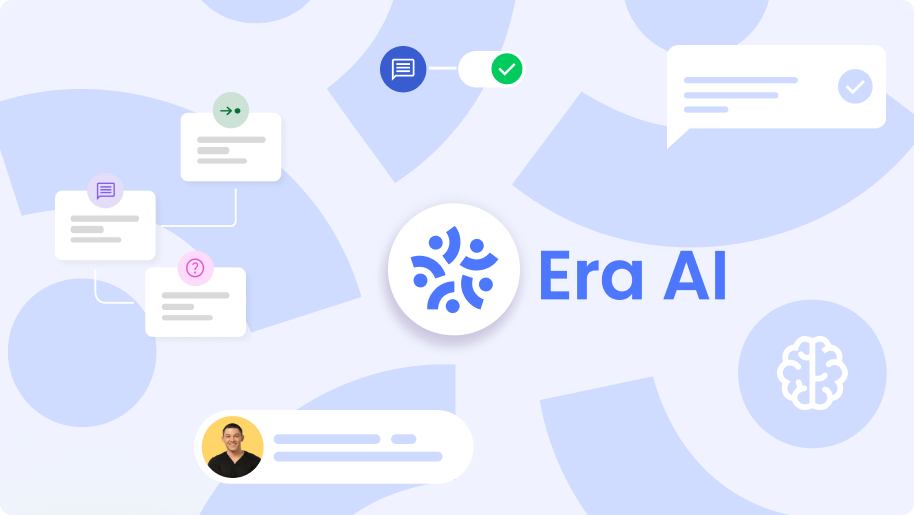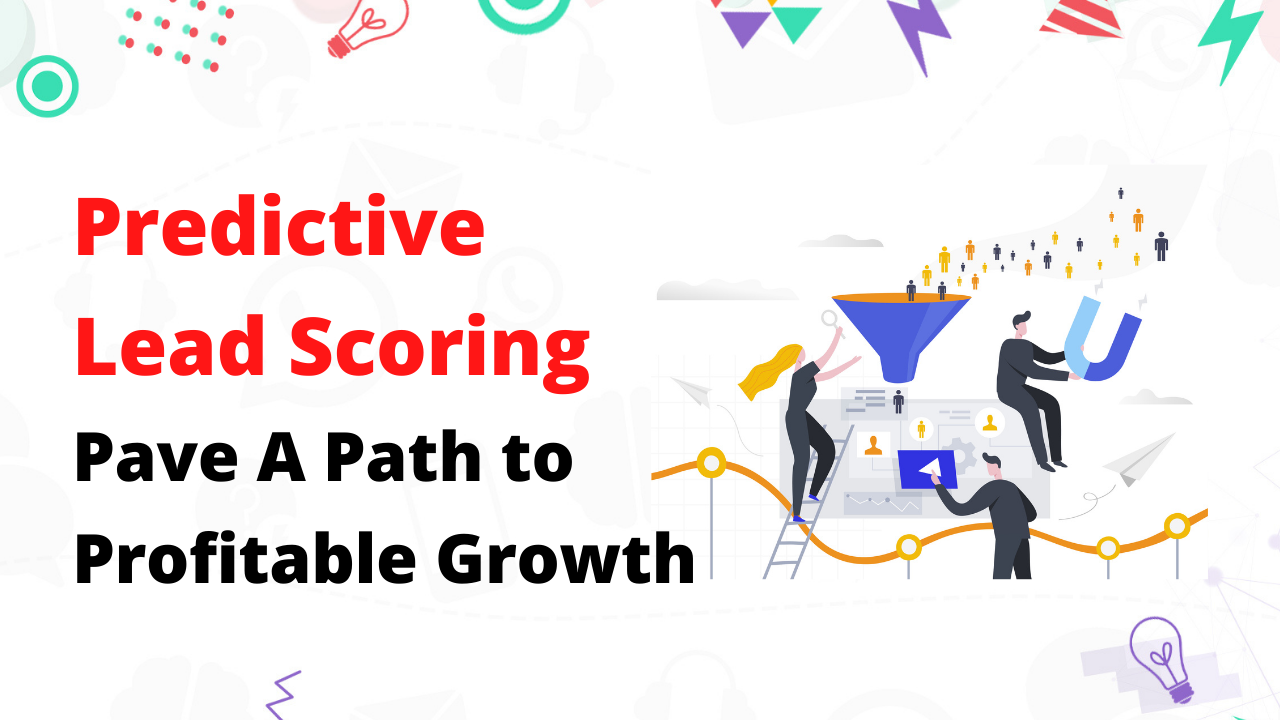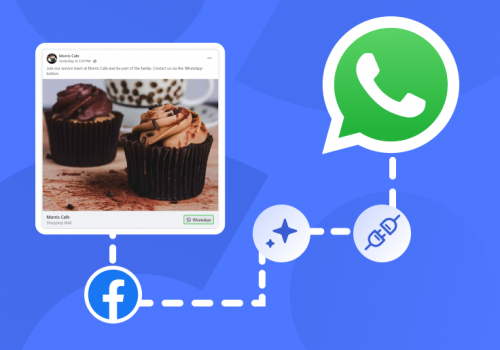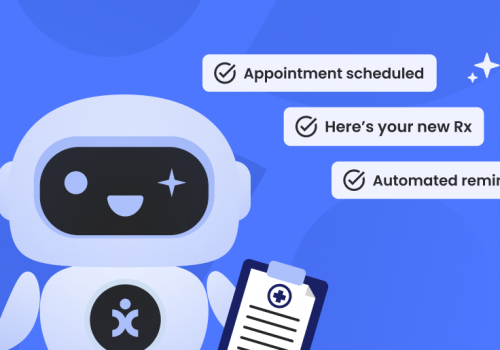Predictive Lead Scoring. Predictive lead scoring is the process of assigning a value to each person who visits your website or interacts with your marketing strategy. This represents how likely it is that they will become qualified leads and purchase from your company.
The higher the score, the more likely they are to convert, which means predictive lead scoring can be used as a powerful marketing tool. Predictive lead scoring measures not only what people do but also what they don’t do.
If someone doesn’t fill out a form on your site or doesn’t provide their information, their likelihood of converting decreases.
But there is much more to know about predictive lead scoring – how it works, the data it collects, and the pros and cons. Let’s dive into all the details.
What is Traditional Lead Scoring?
Lead scoring is the practice of assigning scores to prospects and potential consumers based on relevant information. Demographic data, for example, might be considered relevant data.
In addition, the sector of activity, job title, and so on, can all be used as variables. Other data that may be considered include the number of times a prospect or potential client reached a website.
For instance, someone who comes to the website via an organic search and fills out a form or signs up for more information will generally receive a higher grade than someone who opened an email or read only one blog article before leaving.
Marketers and salespeople rate prospects against a numerical scale that represents how likely they are to convert and how much value they believe they have. The weighted score determines which leads will be given the greatest attention by a salesperson.
Leads should ideally be properly valued and scored, allowing marketers to pass along the most valuable new leads as well as some useful
Unfortunately, with this model, leads aren’t always correctly scored. Marketers frequently rely on their own subjective perspective or previous data trends to assess and weigh activities they consider relevant to making a sale. Opportunities may go unnoticed if they are missed, and sales staff may waste time hunting for under-qualified leads.

Predictive Lead Scoring – What is it?
According to a report by Hubspot, 65% of organizations claim that finding leads and generating traffic is their biggest challenge. This is the reason why many corporations decided to switch to the predictive lead scoring business model.
Lead scoring with predictive analytics eliminates or minimizes the element of human error, resulting in a higher rate of lead identification. Predictive lead scoring uses predictive modeling, a well-known statistical technique for predicting future actions based on past behavior.
Advanced predictive modeling algorithms integrate historical and current data to build a model that predicts future results.
Data from many different sources is merged by predictive modeling algorithms. They look for patterns in the data to help determine what drives success and failure. These patterns are what identify factors that are most relevant and useful in predicting sales.
Lead scoring based on predictive lead analytics may be able to generate a candidate customer profile with the greatest probability of purchasing based on this model.
Not only that, but predictive lead scoring can also reveal trends or relationships in the data that were previously overlooked. All things considered, predictive lead scoring helps marketers and salespeople align their efforts with data-driven criteria.

Benefits of Integrating Predictive Lead Scoring
The importance of predictive lead scoring has been well documented by different reports, but it is still not a system that is used as much as it should be. Here are all the benefits of using predictive lead scoring in your business.
Predictive Lead Scoring Will Make You Save Time
An automated lead scoring system removes the need for your marketing and sales teams to spend time evaluating prospects. Their time may be better spent generating new leads and following up on those who have responded favorably. Using tools like Hubspot lead scoring can allow you to utilize data to strengthen your sales pipeline and optimize your timing to prevent customer churn.
Your Organization Will Continuously Grow
As you expand and service more clients, you’ll get more data. The better predictive lead scoring works and the more data points you have to play with, the more data-driven lead scoring is ready to go for you.
It Strengthens the Relation Between Sales and Marketing Departments
When there are a lot of leads generated but few or even no sales made, these two departments may blame each other, creating conflicts. Predictive lead scoring integration will assist these two departments to collaborate and create more.
It Will Eliminate Human Errors
There will always be a preconception when it comes to evaluating potential clients. People can’t approach a problem without thinking about past experiences. This will taint every decision they make, no matter how objective they attempt to be.
The use of computer algorithms instead of people eliminates the risk of human error and judgment. Needless to say, this is an advantage for both the sales and marketing departments.
Limitations of Predictive Lead Scoring
Predictive lead scoring has been extremely effective in the field of marketing and sales automation. However, it does have certain drawbacks. The following are some examples:
Predictive Lead Scoring Needs Lots of Data: To accurately predict the Lead Score, you’ll need a massive data set of consumers to train the machine learning model and identify your customers’ behavioral patterns.
It’s a Technical Learning Curve: Creating a predictive lead scoring model from the ground up requires significant technical expertise and experience. Implementing a well-functioning predictive lead scoring also demands knowledge of machine learning, Big Data, and Artificial Intelligence.

The Attributes of Predictive Lead Scoring
The predictive lead scoring method relies on certain key attributes to score the leads. Customer profile data and sales performance are just examples of these attributes. Let’s go deeper into the subject with the following attributes:
- Account Profile Data: The account Type, the company Size, and other data can all be configured in this attribute.
- Customer Engagement: This characteristic focuses on the consumer’s online activity, such as how many times the page was viewed, whether they signed up for a free trial, how many times it was downloaded, and so on.
- Customer Purchase Data: The purchase history field contains data about the customer’s prior purchases, such as money spent when purchasing the goods or services, the frequency of purchases, and so on.
- Customer Profile Information: The demographics field contains essential data about the clients, such as job title, address, date of birth, name, and age, among other information.
- Data Related to Sales and Marketing Campaigns: The marketing and sales campaigns assist businesses in gaining a deeper understanding of their clients. This data aids in the segmentation of leads, allowing organizations to focus on a certain area of leads at a time. For instance, a marketing campaign might be used to assess various channels through which consumers have heard about the product, like social media, referrals, and so on.
Once this information is registered on the system, it is used to train machine learning models, which can be utilized to evaluate the lead score of prospects.
How Does Predictive Lead Scoring Work?
The first step in the predictive lead scoring approach is to identify your company’s key and target attributes. These attributes (such as retention rate, conversion rate, quality of service, etc.) can be quickly assessed by your Customer Relationship Management (CRM) system.
After you’ve identified the key attributes, the predictive lead scoring technique employs a number of machine learning algorithms to generate a predictive model that may accurately evaluate customers based on past and demographic data.
These algorithms can easily handle significant volumes of data and run effectively without any speculation. These models are also able to analyze why leads didn’t purchase the goods, which is useful for identifying ways to improve the customer journey and eventually improve your marketing strategy.
Predictive lead scoring is a form of lead scoring that uses data to make predictions about the next actions of a customer.
To sum up, the algorithm and data collection of predictive lead scoring aids in determining how many leads may be converted into customers based on the key attributes considered.
*Contributed by Georgi Todorov, founder of ThriveMyWay, a website dedicated to teaching successful digital marketing strategies.
What’s next?
Once you have successfully converted qualified leads to sales, it’s essential to provide your new customers with excellent support using omnichannel customer communication solutions like Commbox.
Commbox enables businesses to connect with prospects and customers on their preferred channels such as WhatsApp, email, Telegram and Facebook Messenger. Using Commbox’s AI-powered solutions allows brands to boost sales, customer satisfaction and retention rates over time.
About Commbox
Commbox offers an innovative solution for customer interactions, creating a holistic customer communication experience. Using the Commbox platform, companies and enterprises can automate recurring tasks that are excessively time-consuming, allowing your agents to focus on more important tasks. Commbox paves the way for autonomous business communication without losing the quintessential human touch.
Commbox’s mission is to pave the way for companies worldwide to become autonomous enterprises without losing their quintessential human touch.




















